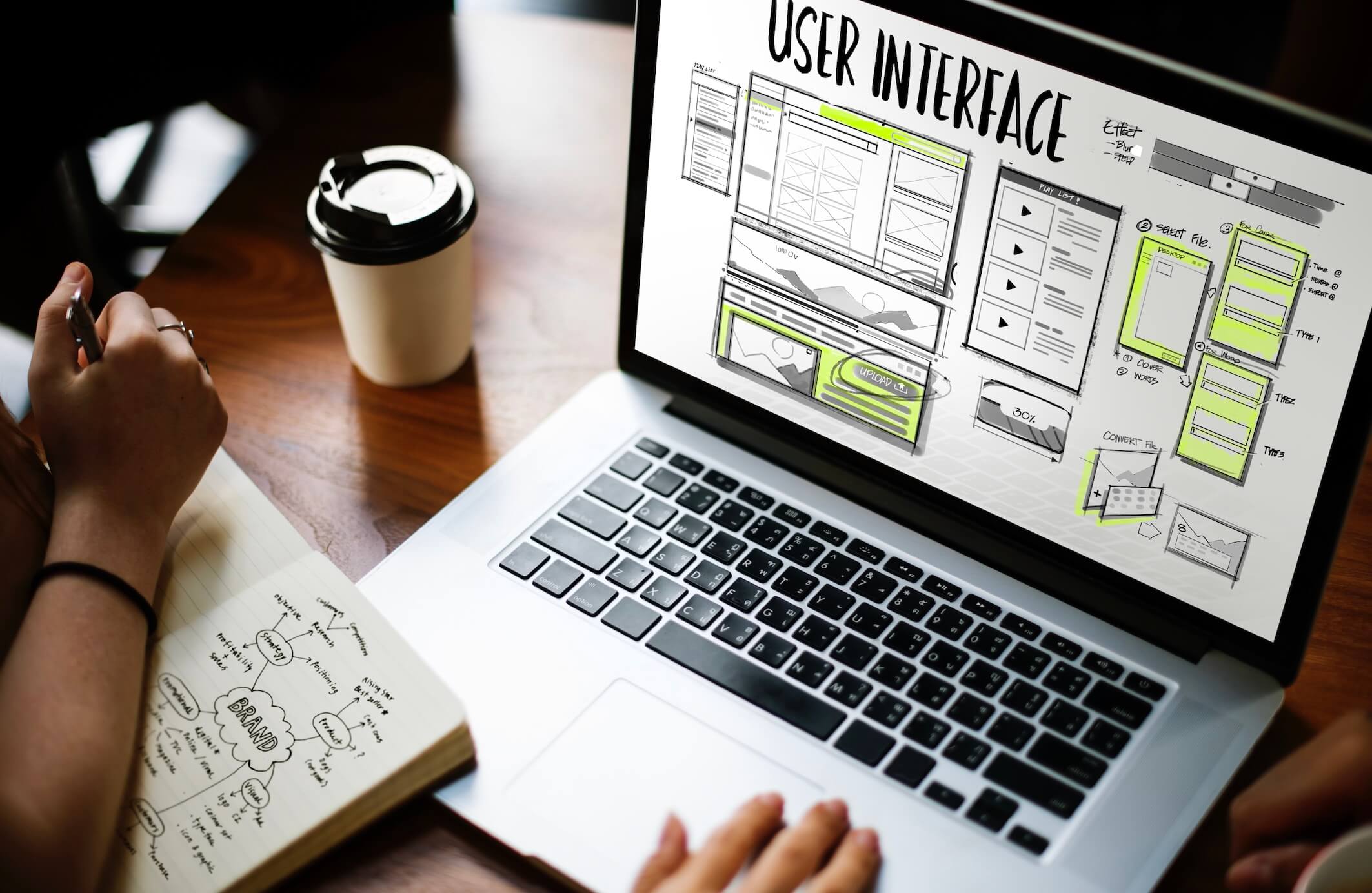What Are the Essential Elements of Effective UI/UX Design?
What Are the Essential Elements of Effective UI/UX Design?
Effective UI/UX design plays a pivotal role in creating exceptional user experiences. It is the key to engaging users, increasing customer satisfaction, and driving business success. In this blog, we will delve into the essential elements of UI/UX design that can elevate your digital products and services. From intuitive user interfaces to seamless interactions, we will explore the core components that make UI/UX design effective. By understanding these elements and implementing them strategically, you can create memorable experiences that captivate your audience and differentiate your brand in today's competitive landscape. Let's dive into the world of UI/UX design and unlock the potential of user-centric experiences.
User-Centered Design Approach

In today's digital landscape, effective UI/UX design plays a pivotal role in delivering exceptional user experiences. By focusing on user satisfaction, engagement, and business success, UI/UX design services have become instrumental in creating captivating digital interfaces. In this blog, we will explore the essential elements that contribute to effective UI/UX design and how they shape the success of businesses in the UX/UI design services industry.
UI/UX design services revolve around understanding the unique needs, behaviors, and goals of users. Through comprehensive user research techniques, such as surveys, interviews, and analytics, UX/UI design professionals gain valuable insights into user preferences, pain points, and motivations. This understanding serves as a foundation for creating user-centric designs that address specific user needs and deliver exceptional experiences.
A key aspect of UI/UX design services is conducting thorough user research and developing user personas. User personas are fictional representations of target users based on real data and research. They help designers empathize with users, understand their behaviors, and tailor the design to their preferences. By incorporating user personas, UI/UX design services can create personalized experiences that resonate with the intended audience.
Intuitive and User-Friendly Navigation
UI/UX design services prioritize the creation of clear and organized menu structures to facilitate seamless navigation for users. These services understand that intuitive menus allow users to effortlessly navigate through the interface, enabling them to find the desired information or features without frustration. By strategically designing menus that are visually appealing, logically organized, and easy to comprehend, UI/UX design services enhance user satisfaction and contribute to an improved overall user experience.
A well-designed menu structure plays a vital role in reducing cognitive load for users. When menus are structured in a logical and intuitive manner, users can easily locate the information or functionality they need, saving them time and effort. By presenting menu options in a clear and concise manner, UI/UX design services ensure that users can quickly grasp the available choices and make informed decisions.
UI/UX design services recognize the importance of establishing consistent and predictable navigation patterns throughout the interface. Users appreciate familiarity in interactions and behaviors as it allows them to navigate through the application or website with ease. By maintaining consistency in navigation elements such as menus, buttons, and links, UI/UX design services create a cohesive and intuitive user experience.
Consistency in navigation patterns significantly reduces the learning curve for users. When users encounter familiar navigation elements, they can quickly understand how to interact with the interface and move from one section to another without confusion. This consistency instills a sense of control and confidence in users, enhancing their overall satisfaction and engagement with the digital product or service.
Visual Hierarchy and Information Architecture

When it comes to effective UI/UX design, creating a clear visual hierarchy is paramount. UI/UX design services understand the importance of guiding users' attention and prioritizing content based on its significance. By thoughtfully utilizing elements such as typography, color, size, and spacing, UI/UX design services ensure that users can easily grasp the importance and relationships between different elements within the interface.
Typography plays a vital role in establishing a visual hierarchy. By using different font weights, sizes, and styles, UI/UX design services can emphasize key headings, subheadings, and body text, effectively guiding users' eyes through the content. The strategic use of color further reinforces the visual hierarchy, with vibrant or contrasting colors drawing attention to important elements while muted or harmonious colors provide a sense of visual balance.
Size and spacing also contribute to the visual hierarchy, allowing UI/UX design services to emphasize key elements and create a sense of visual flow. Larger elements tend to attract more attention, while the appropriate spacing between elements ensures clarity and prevents visual clutter. By skillfully manipulating these design elements, UI/UX design services can create interfaces that facilitate effortless information absorption and enhance user engagement.
UI/UX design services recognize the significance of information architecture in creating a user-friendly interface. Information architecture refers to the organization and structure of information within the interface, making it logical and intuitive for users to navigate and find the desired information quickly.
To achieve this, UI/UX design services employ various techniques to categorize and group information based on user mental models and expectations. They carefully consider how users think and process information, ensuring that the interface's structure aligns with their cognitive patterns. By grouping related information together and providing clear navigation pathways, UI/UX design services enable users to effortlessly navigate through the interface, locating the information they need without frustration.
Responsive and Mobile-Friendly Design
In today's digital landscape, where users interact with interfaces on a variety of devices, UI/UX design services prioritize responsive design. They recognize the importance of creating interfaces that adapt seamlessly to different devices and screen sizes, including desktops, mobiles, and tablets. By employing responsive design techniques, UI/UX design services ensure that the user experience remains consistent and optimized, regardless of the device being used.
Responsive design allows the UI/UX design to dynamically adjust and reflow based on the available screen space. UI/UX design services carefully consider the layout, content, and interactions to provide an optimal experience on each device. Whether it's resizing and repositioning elements, optimizing image sizes, or adapting navigation for touchscreens, the goal is to create a user-friendly interface that remains visually appealing and functional across a range of devices.
UI/UX design services understand the importance of delivering a seamless user experience across different platforms. Consistency is key when it comes to design elements, interactions, and functionalities across desktop, mobile, and tablet devices. By establishing a unified experience, UI/UX design services enable users to seamlessly transition between devices, maintaining engagement and enhancing user satisfaction.
UI/UX design services strive to create a harmonious visual and interactive experience that spans across platforms. This includes maintaining consistent branding elements, such as logos, colors, and typography, to reinforce brand identity and ensure recognition across devices. Interaction patterns, such as gestures or navigation menus, are also carefully crafted to provide familiarity and ease of use, regardless of the device being used.
Consistent Branding and Visual Design

UI/UX design services understand the significance of aligning the design with the brand identity. They recognize that a well-executed UI/UX design should not only provide a seamless user experience but also reflect the brand's values, personality, and visual aesthetics. By incorporating brand elements throughout the interface, such as logos, colors, and typography, UI/UX design services create a cohesive and memorable brand experience.
Consistency is key when it comes to branding in UI/UX design services. By employing a consistent use of colors, typography, and imagery, UI/UX design services reinforce brand recognition and create a visually appealing interface. Colors play a crucial role in conveying emotions and evoking specific brand associations. UI/UX design services carefully select and apply colors that align with the brand's identity, creating a harmonious visual experience for users.
Typography also plays a significant role in brand representation. UI/UX design services consider the brand's typography guidelines and select fonts that reflect its personality and tone. Whether it's a sleek and modern typeface or a classic and elegant font, the typography choices in UI/UX design services contribute to the overall brand perception and enhance the interface's visual appeal.
UI/UX design services make thoughtful decisions regarding the use of imagery and visuals. They select visuals that resonate with the brand's aesthetics and values, ensuring that the interface communicates a consistent brand message. By incorporating brand-specific imagery and illustrations, UI/UX design services create a visual narrative that reinforces the brand's identity and establishes a strong connection with users.
Usability Testing and Iterative Design
UI/UX design services understand the value of usability testing as a crucial step in evaluating the effectiveness of a design. Usability testing involves observing real users as they interact with the interface and collecting their feedback. By closely observing user behavior, UI/UX design services gain valuable insights into how users navigate the interface, encounter challenges, and perceive the overall user experience.
During usability testing, UI/UX design services carefully design scenarios and tasks that reflect real-world usage scenarios. They observe users' interactions, taking note of any difficulties or confusion they encounter. By gathering qualitative and quantitative data, such as task completion rates, time-on-task, and user satisfaction ratings, UI/UX design services can uncover usability issues and identify areas for improvement.
Usability testing provides an opportunity to validate design decisions, uncover usability gaps, and gain a deeper understanding of user needs and expectations. It allows UI/UX design services to make data-driven decisions and prioritize improvements based on real user feedback. By involving users in the design process, UI/UX design services ensure that the final product meets their expectations and addresses their pain points.
UI/UX design services embrace an iterative design approach, using the insights gathered from usability testing to refine and enhance the design. Iterative design recognizes that the design process is an ongoing cycle of learning, testing, and improving. By incorporating user feedback, UI/UX design services can make informed design decisions and deliver a user experience that aligns with user expectations.
Performance and Speed Optimization

UI/UX design services prioritize performance optimization to ensure fast loading times and a seamless user experience. They understand that users expect quick and responsive interfaces and a slow-loading website or application can lead to frustration and user abandonment. To address this, UI/UX services employ various techniques to enhance the speed and responsiveness of the interface.
One aspect of performance optimization in UI/UX design services is minimizing file sizes. By optimizing images, compressing files, and reducing unnecessary code, UI/UX services ensure that the interface is lightweight and efficient. This optimization process allows for faster data transfer and reduces the time it takes for users to access and interact with the interface.
Additionally, UI/UX design services employ caching techniques to enhance performance. Caching involves storing certain data or resources locally on the user's device, allowing for quick retrieval and reducing the need to fetch information from the server repeatedly. By utilizing caching mechanisms, UI/UX services can significantly improve load times and provide a smoother browsing experience for users.
Conclusion
Effective UI/UX design is a crucial component of creating exceptional user experiences and driving business success. By focusing on user satisfaction, and engagement, and aligning the design with the brand identity, UI/UX design services can deliver captivating digital interfaces. Through intuitive and user-friendly navigation, visual hierarchy and information architecture, responsive and mobile-friendly design, consistent branding and visual design, usability testing, and performance optimization, UI/UX design services can create memorable experiences that captivate users and differentiate brands in a competitive landscape.
By understanding and implementing these essential elements of UI/UX design, businesses can unlock the potential of user-centric experiences and establish a strong connection with their audience. Embracing the world of UI/UX design is the key to delivering exceptional digital products and services in today's digital age.



